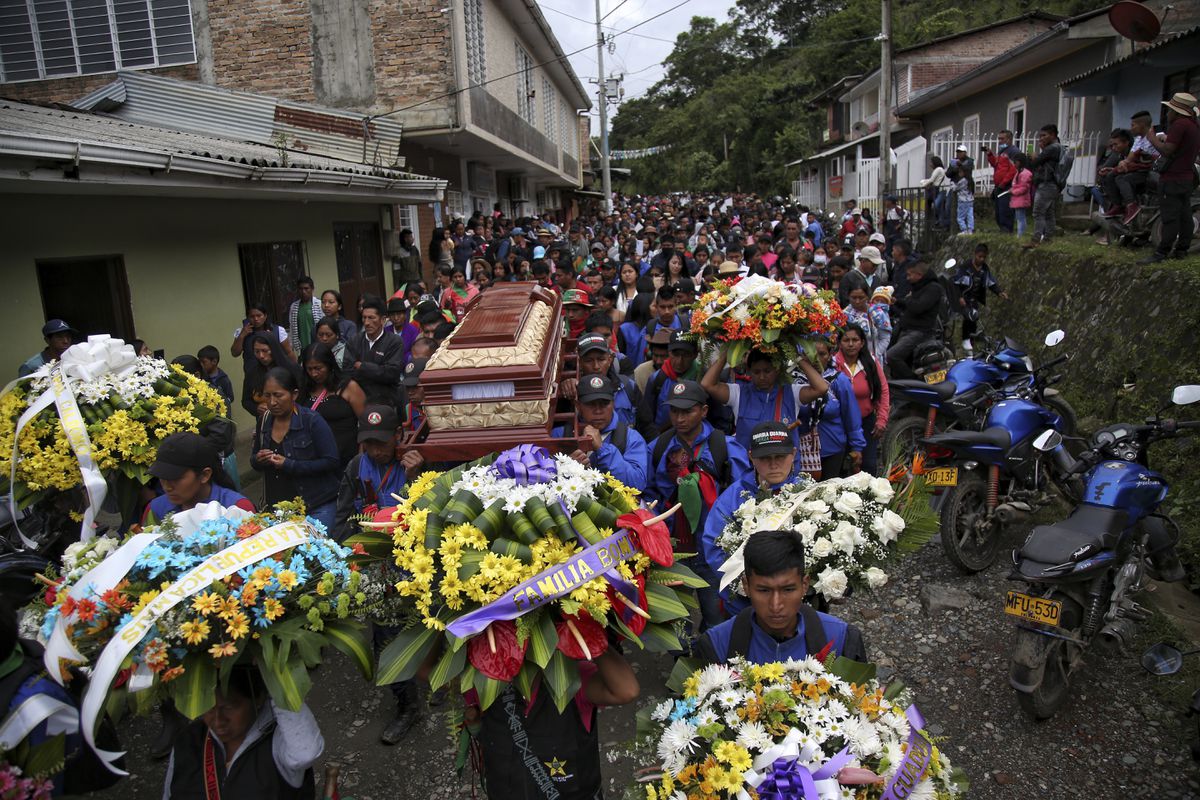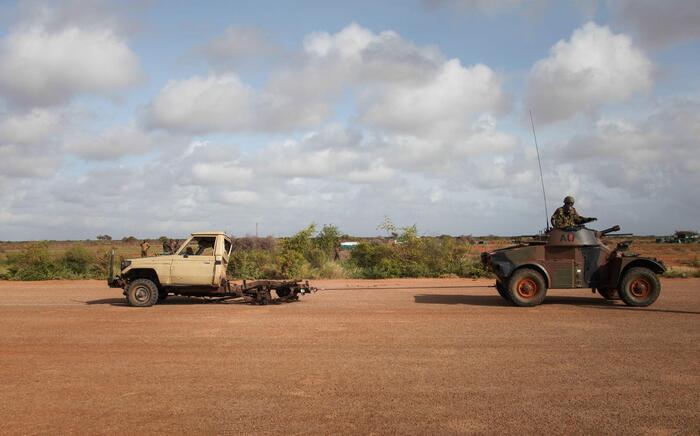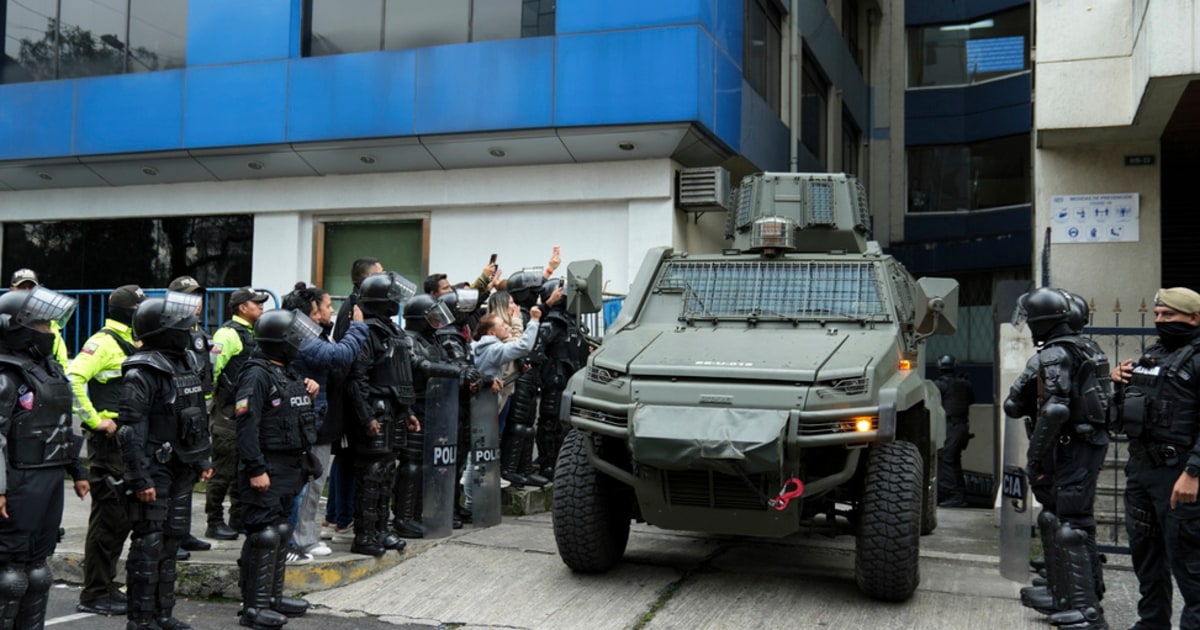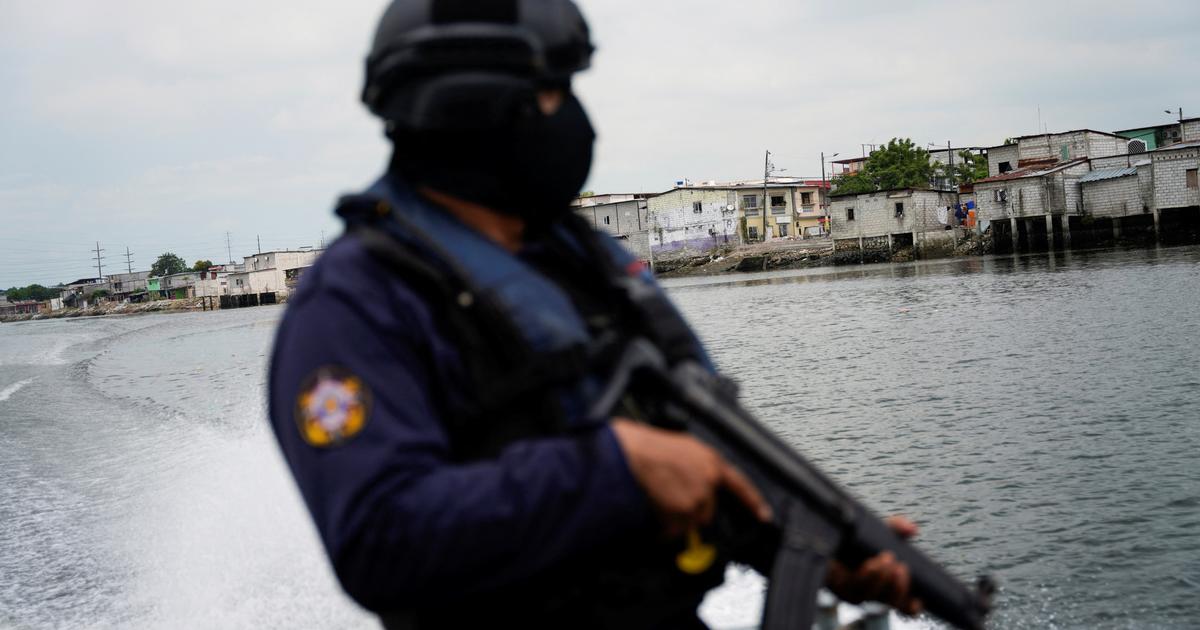Anti-narcotics police walk in a coca crop in La Hormiga, Putumayo, on April 9, 2022.Fernando Vergara (AP)
The border departments of Colombia with Ecuador have set off all the alarms.
It is one of the areas of the country where the war that the peace agreement with the extinct FARC guerrilla sought to extinguish is still raging.
Last week the massacre of five people in Orito was known, and the previous month that of at least another 18 people in Puerto Guzmán, both towns in the department of Putumayo.
Whether due to the Raúl Reyes camp on Ecuadorian soil, the crimes committed by alias Guacho on both sides of the line, or the terror that the war has sown between the FARC dissidents and the Border Commandos, the border between the Both countries have been a zone of conflict so far this century, with the proliferation of armed groups and drug traffickers, which in recent months has seen an increase in violence.
Faced with the crisis, presidents Gustavo Petro and Guillermo Lasso ratified last week that they will carry out joint operations on the common border in a friendly exchange on Twitter, which was not limited to social networks.
The Ecuadorian Presidency later confirmed that the two leaders spoke by phone "to ratify that Ecuador and Colombia will work together to protect the borders to combat drug trafficking from both fronts," with the purpose of cornering criminal gangs and organized crime. .
For some time now, the presence of the dissidents on the other side has become more palpable, even with explosive attacks.
The main fuel of the conflict, as in so many other places in Colombia, is drug trafficking.
For several years there has been a tendency towards the concentration of coca crops, particularly in border departments, and in strategic areas for cocaine outlets.
Throughout Colombia there was a record number of 204,000 hectares of drug crops at the end of 2021, according to the latest report from the United Nations Integrated System for Monitoring Illicit Crops (SIMCI), which is considered the official measurement.
Only 3 of the 32 departments, Norte de Santander, Nariño and Putumayo, concentrate 62% of all the coca in the country, highlighted the report.
While Norte de Santander borders with Venezuela, Nariño and Putumayo –which add up to almost 85,000 hectares of coca crops, something like 40% of all of Colombia– share the border line with Ecuador.
The cocktail on that border also includes illegal mining, forced recruitment, human trafficking, organ and arms trafficking, and smuggling of all kinds, all boosted by the dollarization of the Ecuadorian economy, which facilitates money laundering. money.
The Pacific coast, which bathes the two countries, is the natural outlet for drugs that usually have the United States as their final destination.
At different times, under different governments, the border has emerged as a point of conflict between the two countries.
The diplomatic rupture caused by the Colombian attack in 2008 that killed Raúl Reyes in the camp maintained by the then number two of the FARC on the Ecuadorian side is well remembered.
In more recent times, the kidnapping and subsequent murder of three Ecuadorian journalists from the newspaper
El Comercio
,
by a dissident FARC drug trafficking group in April 2018 shocked Ecuador.
In the border area of Mataje, the photographer Paúl Rivas, the editor Javier Ortega and the driver Efraín Segarra "were assassinated with shots to the back of the head, at point-blank range, under a dark and rainy night in the middle of the Colombian jungle", revealed some time later the Frontera Cautiva report, the product of an investigation by a consortium of various journalistic organizations that put an end to official secrecy.
The person responsible was the Oliver Sinisterra Front, a dissidence that has operated on both sides of the convulsed border line, at that time under the command of Walther Patricio Arizala,
Guacho
.
That structure had already blown up a police station on the Ecuadorian side, and the crime made Guacho one of the most wanted by the authorities of both countries.
At the end of that year he was killed in Colombia, but peace did not reach the border.
After the disarmament of the former Revolutionary Armed Forces of Colombia, converted into a political party with representation in Congress, a disorderly archipelago of armed groups remains active, with more fractured structures.
In many places where all kinds of illegal economies exist, they left a vacuum that other armed actors have filled in the absence of a state response.
Last year the number of internal armed conflicts in Colombia increased, according to the balance of the International Committee of the Red Cross (ICRC).
And although the dissidences led by Iván Márquez and Gentil Duarte have tended to attract the spotlight, one of those six conflicts that persist, according to the analysis of the humanitarian organization, is the confrontation between one of the dissident factions and the Commandos of the Border in Putumayo.
The violence in that department in particular has become a great challenge to the total peace policy pursued by the Petro government, with the negotiation or simultaneous submission of the different armed actors.
There, the territorial dispute between the Carolina Ramírez Front and the Border Commandos, two hybrid groups, heirs to a greater or lesser extent of the dissidences that distanced themselves from the peace process, has bathed the territory in blood.
Last month, the death of at least 18 people, according to the Ombudsman's Office, activated all the alarms.
Former Ombudsman Carlos Negret maintains in dialogue with EL PAÍS that 35 people died in that combat in Puerto Guzmán, according to the versions of the sources that he still maintains in that region after his management, very focused on remote territories.
With the exception of the United Nations, he laments, "to date no one has gone on a humanitarian mission to find out what happened in Putumayo."
According to his accounts, between one massacre and another, there have been more than 50 deaths in the last 45 days.
What is happening in the department "is a human tragedy that the country has not taken into account," he underlines.
“The war did not stop there.
There were places in this country where peace did not
hit
;
in Cauca, in Nariño, in Chocó or Putumayo”, departments that are repeated in the list of regions that this year have registered more than one massacre.
It has always been a disputed border, in which various forms of violence have been presenting, including forced recruitment, "only it has not been visible enough," laments representative Andrés Cancimance.
"We never recommend the militarization of the territory, it is a mistake of the national government to ask another country for support to militarize the border," said the congressman from Putumayo, despite belonging to the government coalition.
Asking exclusively for military efforts, he warns, "is going to escalate the confrontation."
Subscribe here
to the EL PAÍS newsletter on Colombia and receive all the latest information on the country.




/cloudfront-eu-central-1.images.arcpublishing.com/prisa/CQSZWCMFFEISWLLJKA76I3TGKA.jpg)




